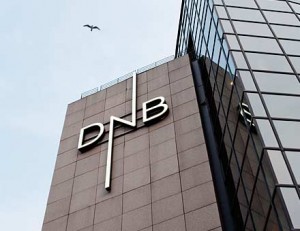DNB debut £250m FRN offers diversification
Feb 13th, 2015
DNB Bolgikreditt made its sterling covered bond debut on Monday with a £250m (Nkr2.90bn, Eu336m) five year floating rate, and an official at the issuer said the maturity, format and currency suited its needs.
 Sindre Nikolaisen, vice president, long term funding, at DNB, said that the decision to go for the five year sterling issue was driven by two factors.
Sindre Nikolaisen, vice president, long term funding, at DNB, said that the decision to go for the five year sterling issue was driven by two factors.
“One is that in general we like to diversify out of the euro market if we can,” he said, “and the pricing looked attractive for a five year sterling deal.”
The deal was announced as a benchmark-sized transaction with guidance of three month Libor plus the 28bp area, and ultimately priced at 28bp over by sole lead Nomura. A syndicate official at the lead said this compared with a £250m Lloyds July 2020 issue quoted at 24bp/21bp that was issued last year.
Nikolaisen said that the pricing was probably inside what could have been achieved on a euro benchmark. The lead syndicate official said that the 28bp sterling level is equivalent to flat to 1bp through mid-swaps for a euro benchmark and that a DNB October 2019 euro benchmark issued in September at minus 3bp was at minus 2bp on Monday, implying that, taking into account a new issue premium, a new euro benchmark would come wider than the sterling FRN.
He said that the transaction also allowed DNB to attract the attention of key sterling accounts, with almost 90% of the deal going to UK buyers and the deal split roughly 40% to funds and 45% to bank treasuries.
DNB’s issue came after six sterling FRNs issues, one a tap, totalling some £3.4bn in the three year part of the sterling curve so far this year, with all but one of the new transactions priced at 19bp over.
The lead syndicate official said that the transaction was targeted at extending the availability of longer dated FRN paper in sterling, with little of such quality being available apart from some European Investment Bank trades. DNB’s Nikolaisen cited two reasons why the issuer chose the five year maturity.
“In general we don’t do three years,” he said, “not at all, actually. For us, anything shorter than five years is not that interesting. And we have very few maturities in 2020, so it fits our profile.”
DNB’s sterling issue comes after it raised large amounts in floating rate notes in euros last year.
“We would swap any fixed rate transaction into floating rate anyhow, so we don’t have any preference in that sense,” said DNB’s Nikolaisen. “But there seems to be a good demand for floaters. And it is easier to tap these larger semi-public FRNs, as we have done, than to do so with fixed rate deals.”
Nikolaisen said that DNB will issue more this year than last.
“We have maturities of Nkr85bn this year, and basically with some small growth, that’s approximately the level we estimate to do this year,” he said. “And we also plan to have an overweight of covered to senior in this, more or less the same as before — we still have good capacity in our cover pool and it’s cheaper for us to do covered rather than senior.”
Nikolaisen said that investors have in general raised questions about how the fall in oil prices will affect the Norwegian economy and real estate prices.
“We have focused on the fact that even though Norway will have a bit slower growth than before, the growth in the economy is still there,” he said, “and relative to other European and even other Scandinavian countries the Norwegian economy still has strong fundamentals, even with the current oil price outlook.”








